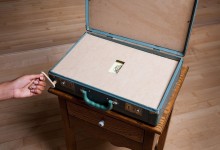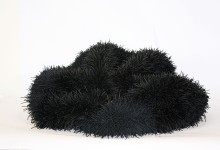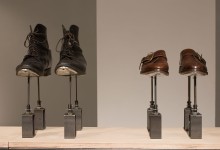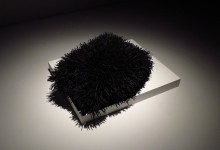Opening reception: Saturday, November 7th from 3-5pm
Ingrid Bachmann: Counterpoint
Ingrid Bachmann’s work can be read as a mapping of social and technological evolutions. It attempts to harness the alienation of new media and return it to more corporeal base. Pelt (Bestiary) adapts the biotechnological machines we encounter and presents it as an object that beyond living, breathes. These six kinetic sculptures highlight a new kind of autonomy that exists in technology. Bachmann’s desire to humanize the technology that often alienates us, serving to emphasize the absurdity of our interactions with new media. There is an attempt to make physically tangible our current digital existence. The sculptures have their own personalities, some of which react to human presence, while others move of their own accord creating a more pronounced sense of alienation and at the same time familiarity between the viewer and the technology. These are digital objects that move like anemone, unfolding outwards and drawing into themselves’ taking on the artist’s personification of objects that are arguably just that, objects, not beings. However, we are left with the reminder that we are not sure where our body ends and where the machine begins.
Bachmann’s Symphony for 54 Shoes, takes 27 pairs of shoes used in a cacophonous display of polyrhythm. The various shoes move independently of one another, dancing to the beat of tubular magnetic sensors controlled by a microcontroller and software that activates a sequence creating another flourish of movements. This simple technology conveys a ghostly aspect of dance, where feet shuffle animatronically to no music. The idea of the automated human is invoked here. One’s memory is drawn to Germany and to the stochastic rhythm of Karlheinz Stockhausen as well as the absurd audio constructs in Joseph Beuys’ Ja Ja Ja, Ne Ne Ne as the everyday pitter patter of feet highlights the mindlessness of our movements, ever more so accelerated through new technologies. Once again, the relationship between virtual and material are made tactile in a manner which forces the viewer to question their role in biotechnological evolution.
The works in Bachmann’s Portable Sublime explore how original concepts of a Burkian sublime can now be managed in devices we use everyday. The sublime in these works takes on a contemporary mobility that again questions our relationship to technology. Within each suitcase is an independent installation that echoes its own narrative. Like other works by Bachmann, these installations use quite basic technology to allude to greater advances with other technologies. Mobile devices have allowed us to experience the vast and awe-inspiring while taking the metro to work. Experience in and of itself takes place within the screen. One suitcase contains broken glass and light, creating a fractured sense of reflection that mirrors our own disjointed connection to nature. Another box that contains a constructed waterfall shows that nature is portable – the sublime has become everyday.
Bachmann’s work attempts to add flesh to the cold alienation of new technologies, providing a harness for us that slows down our accelerated existence so that we can for a moment appreciate at a basic level what it means to us.







